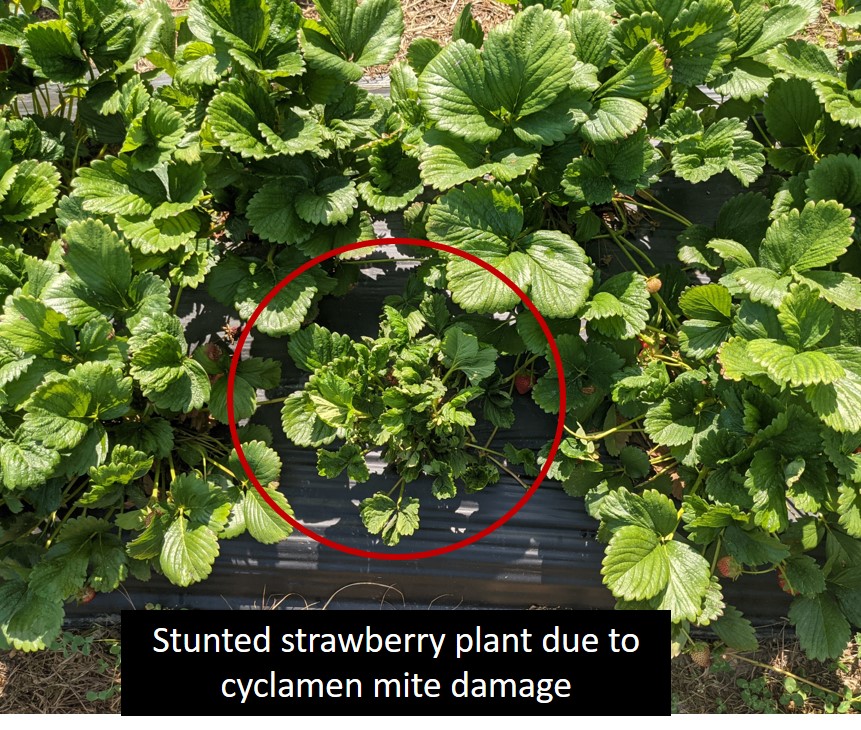In the past weeks, a few strawberry growers have expressed their concern about the possibility of cyclamen mite infestations. After visiting some strawberry farms in the Chesapeake area this week, I found symptoms of cyclamen mite damage in a few fields. Because of the small size of the mites, I took leaf samples from the symptomatic plants and confirmed the presence of the mites in the laboratory.
The cyclamen mite is a serious pest of strawberries. It has been reported in most strawberry-producing states. Cyclamen mites are tiny mites (0.001 in long) that feed on the tissue of nonexpanded and newly unfolded leaves in the strawberry plants. Adults and immatures of the cyclamen mite are considerably smaller than two-spotted spider mites and cannot be easily seen with the naked or a hand lens. Symptoms of cyclamen mite infestation include severely crumpled and crinkled leaves, as well as stunted plants.
The presence of cyclamen mites was confirmed mostly on ‘Ruby June’ strawberries, but they can infest any strawberry cultivar. Strawberry growers in the Virginia Beach metropolitan area and the eastern shore should beware of the presence of this pest mite in their field. There are very few miticides available for the control of cyclamen mites. Unfortunately, the same products used for the control of two-spotted spider mites do not always provide control for cyclamen mites. The best performing product against this pest is Portal (fenpyroximate). Agri-mek (abamectin), is also labeled for cyclamen mites. Despite being miticides, Acramite and Magister are not labeled for control of cyclamen mite and may not provide enough protection against it.


Dr. Lorena Lopez
Department of Entomology
Virginia Tech | Eastern Shore Agricultural Research and Extension Center (ESAREC)
(954) 529 9042 | lorelopezq257@vt.edu
